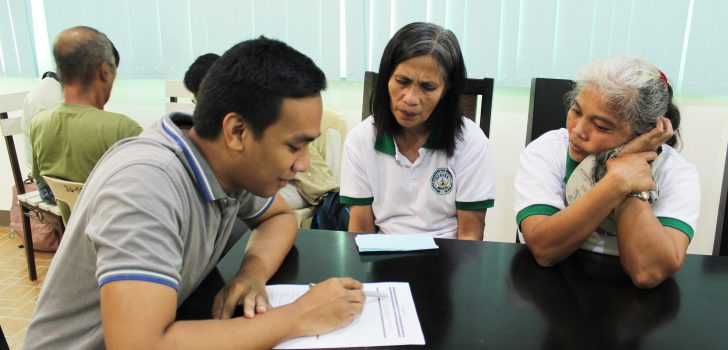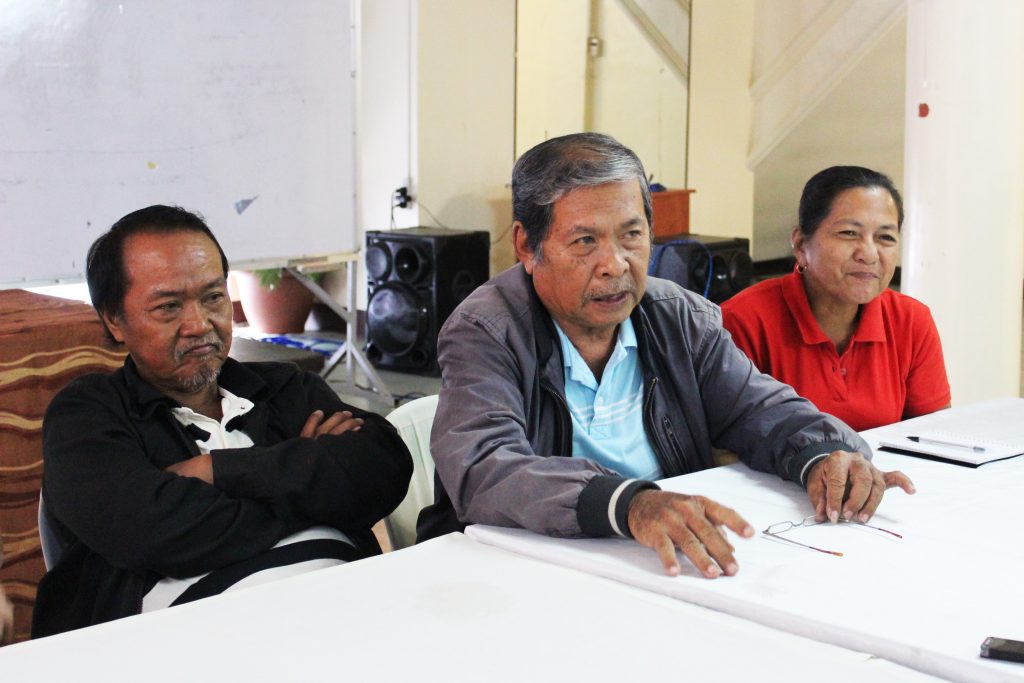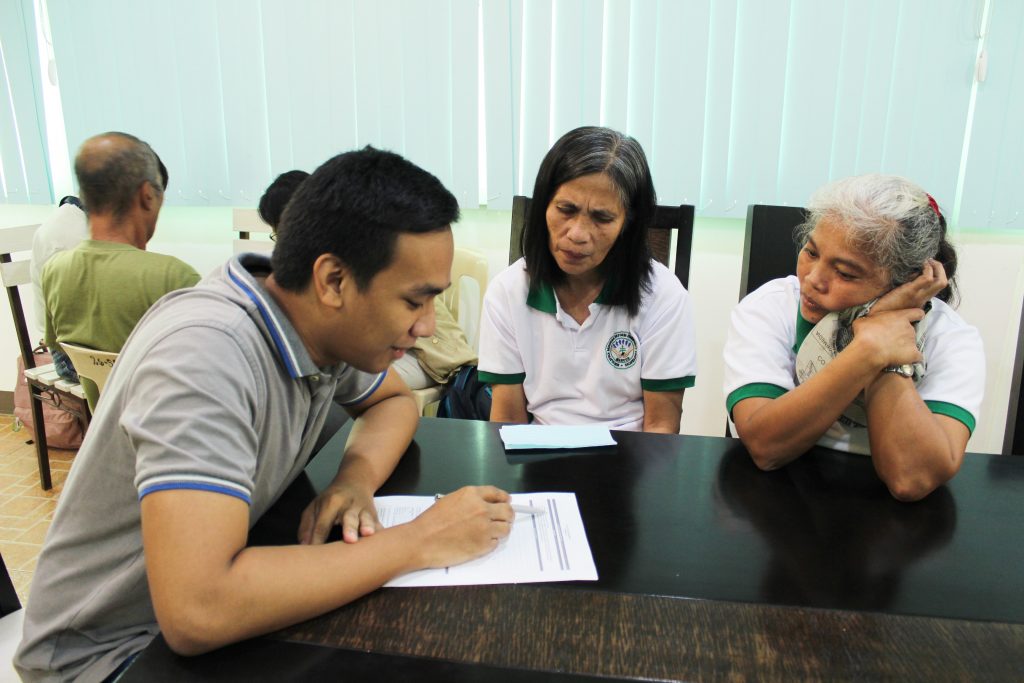 Respondents from the Municipality of Pola, Oriental Mindoro answer questions about their calamansi-related activities for the Value Chain Analysis assessment.
Respondents from the Municipality of Pola, Oriental Mindoro answer questions about their calamansi-related activities for the Value Chain Analysis assessment. VCA implementation reveals positive changes in Oriental Mindoro’s calamansi industry
The Philippine Rural Development Project (PRDP) implemented by the Department of Agriculture (DA) conducted its first assessment of Oriental Mindoro’s calamansi value chain analysis (VCA) since it began implementation in 2014.
The assessment was crafted in accordance with the PRDP’s monitoring and evaluation framework by gathering primary data on the calamansi industry through household surveys, focus group discussions, and key informant interviews. The members of farmer cooperatives, representatives from attached national agencies and the provincial government, and farmers, traders, and processors of calamansi from different municipalities of the province were the respondents.
The calamansi VCA which contained agricultural data from 2013, and was approved and effected the following year, was the baseline of the recent assessment which collected data from 2018.
Improvement in input supply and expansion of production
One of the constraints identified in 2013 was the lack of good quality seedlings for input supply. At that time, the provincial government was only able to provide approximately 105,000 pieces of calamansi seedlings which can only cover about 168 hectares of calamansi plantation.
Through the DA’s High Value Crops Development Program as well as the Provincial Government’s efforts, the recent assessment showed that the provision of seedlings has reached to about 272,875 pieces. This covered 437 hectares of calamansi plantation, a 160% increase from the previous data.
This improvement then contributed to the increase in the area of agricultural production in the province. In 2016, after the Typhoon Nona, there were only 2,426.91 hectares planted with calamansi. This increased to 3,408.46 hectares in 2018 with an average growth rate of 15.6 percent.
However, while Oriental Mindoro remained as the top producer of calamansi in the country, for reasons such as the conversion of calamansi farms to lanzones or rambutan farms, pest and disease infestations, and natural calamities, the volume of production of calamansi still declined from 2013 to 2018.
The government, however, through the Agricultural Training Institute, Mindoro State College of Agriculture and Technology, and other attached agencies, continued their support by training farmers on improved production management like rejuvenation, off-season fruiting technology, pest and disease management, and improvement of nutritional status of calamansi trees. There were also provisions of drip irrigation system, pest and disease control testing laboratory, and organic fertilizer production plants.
The PRDP, in particular, completed two farm-to-market roads (FMR) in the Municipalities of Baco and Victoria which boosted the movement of inputs and delivery of calamansi produce in market areas.
Increase in processors and change in marketing system
In the processing segment, there was a noted increase in the number of small-scale processors from only six in 2012 to ten in 2018, some of which are now already delivering products outside of the province in Metro Manila and other regions. Majority of these processors are also already undergoing training and accreditation from the Food and Drugs Administration, if not already accredited.
Before, processed calamansi products coming from Oriental Mindoro have no standard quality. As a form of support, the Department of Trade and Industry and Department of Science and Technology funded the provision of processing facilities, equipment, and capacity building of processors to not only standardize their methods but also develop the limited technology in the processing of other calamansi by-products such as oil and pulverized juice.
The Provincial Government, on the other hand, in working to change the trader-influenced marketing system in the province, established a collective marketing system of calamansi harvest. This led to the construction of the PRDP-funded trading center and buying station in Calapan City, operated by a local farmers’ organization.
Unfortunately, while the trading center offered a buying price higher than the local traders, selling produce to institutional buyers, there were still a number of farmers that opted to sell outside of their organization to other buyers.
Continuous development of the industry
The VCA is a required document for every subproject approved under PRDP, although it is also now actively being used by other national and local programs in funding government undertakings. It serves as a guide for local governments, mainly provinces, in the crafting of their commodity investment plans where they formulate agricultural interventions appropriate in their particular areas.
The assessment, at its core, aims to describe changes in the respective experiences of value chain players prior to the implementation of interventions in the commodity investment plans and now that some interventions are already in place.
Also, it aims to identify the remaining gaps and challenges, to come up with ways of communicating to prospective investors. The results of this assessment, as a form of update on the previous VCA data, will give the local government as well of an updated information in the establishment of their own interventions. – Leira Vic Colongon, DA-PRDP MIMAROPA RPCO InfoACE Unit

Victor Ulayan, member of the farmer organization Naujan Farmers’ Association, shares his insights during the conduct of the Value Chain Analysis assessment.

